The 20 Best Lesser-Known Towns to Visit in the UK

That’s what this travel guide to short staycations in the UK is all about.
We’ve pulled together 20 of the best lesser-known towns to visit in the UK, grouped into four easy-to-explore regions. Each one is ideal for a family like yours, where the kids might be old enough for a bit more independence, but still young enough to want your time. Or for couples who like to travel (with more than the odd café stop thrown in between) and take a trip at their own pace.
Whether you’re in a caravan, motorhome or campervan, or just looking for some hidden gems of UK travel to take your next long weekend, this list will have something for you.
Trip 1: Escape up North to Yorkshire & Northumberland
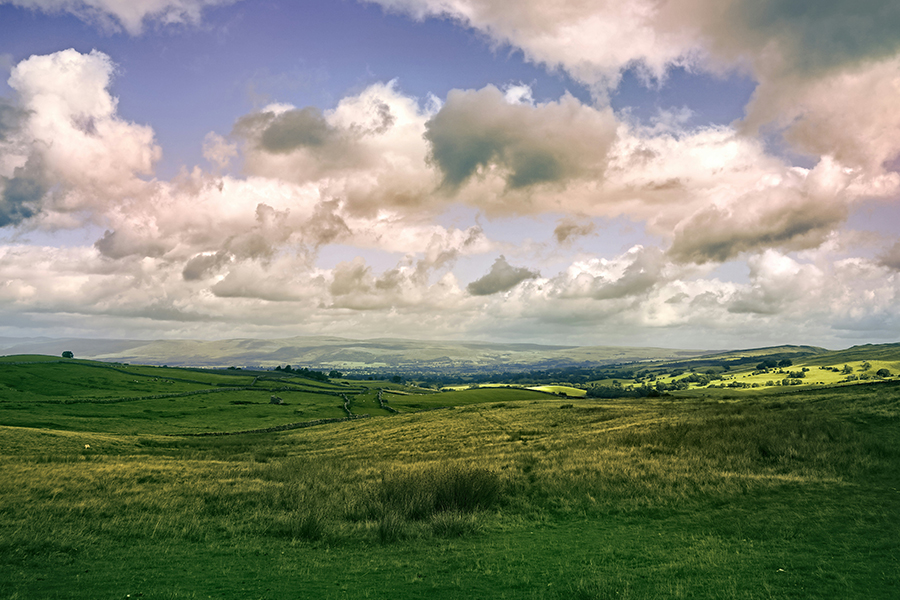
Appleby-in-Westmorland, Cumbria
Why go: A historic market town in the heart of the Eden Valley, once the county town of Westmorland and still proudly holding onto its old name.
Its 12th-century castle was once home to Lady Anne Clifford, one of England’s most remarkable noblewomen, and the annual Appleby Horse Fair (the biggest of its kind in Europe) draws people in from across the country.
The rest of the year, it’s a quiet spot, ideal for wandering riverside paths and exploring the sandstone streets.
What to do:
- Walk along the River Eden to the 17th-century bridge
- Visit Appleby Castle and take in its sprawling grounds
- Pop into local cafés and independent shops dotted throughout town
Good to know: It’s on the scenic Settle–Carlisle railway, making it an ideal stop if you want to take a break from driving on your campervan, caravan or motorhome trip.
Why go: Once one of the busiest fishing ports on the Yorkshire coast, Staithes is now better known for its artists and rockpools.
Captain Cook lived and worked here as a young apprentice, and the village still feels connected to the sea with its old lifeboat station and brightly painted cottages overlooking the harbour. It’s also a designated Heritage Coast site, meaning it’s great if you’re interested in geology (or at least a lovely coastal walk).
What to do:
- Explore the harbour and watch the fishing boats come in
- Visit the Captain Cook & Staithes Heritage Centre
- Join the local art trail or browse coastal-inspired galleries
Good to know: Be mindful that there’s no parking in the old village, so you’ll need to park at the top and wander down, which only adds to the charm.
Why go: Rothbury sits on the River Coquet and has long been a gateway to the more open spaces of Northumberland. It’s best known for Cragside, which was the home of Victorian inventor Lord Armstrong, and also the first house in the world to be lit by hydroelectric power.
The town itself is filled with galleries, traditional knitwear shops, and many independent cafés (who doesn’t love those?). With the Cheviot Hills to the north and one of the UK’s most ancient woodlands on the doorstep, it’s ideal for families who like to take their walks with a side of history.
What to do:
- Visit Cragside, which was the first house in the world powered by hydroelectricity
- Walk the riverbank trails and Coquetdale hills
- Browse local art shops and pick up traditional Northumbrian knits
Good to know: It’s often overlooked in favour of Alnwick or Bamburgh, which is exactly why it’s worth a look for a little weekend break.
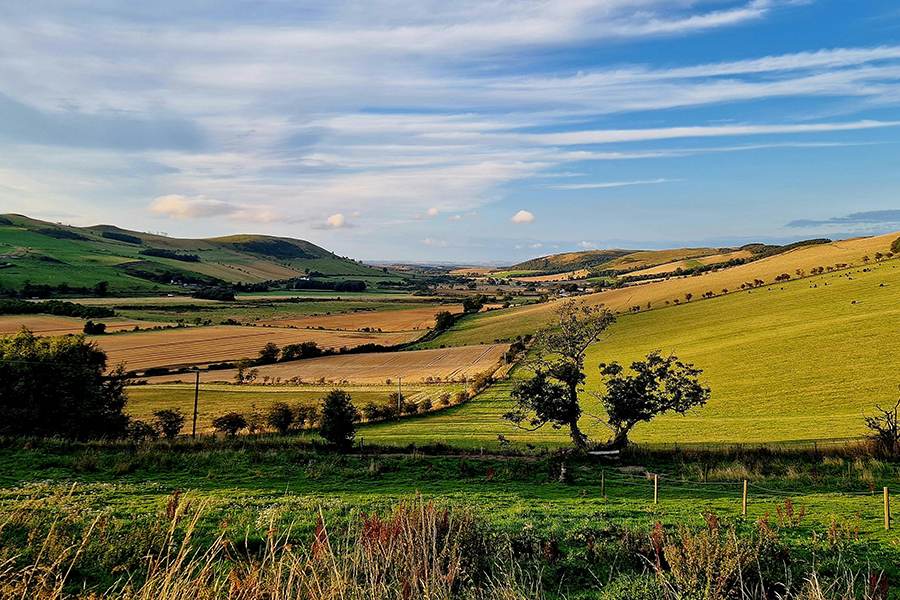
Middleton-in-Teesdale, Durham Dales
Why go: Set within the North Pennines Area of Outstanding Natural Beauty, Middleton-in-Teesdale is a former lead-mining town that’s now a gateway for outdoor adventures.
It sits right on the Pennine Way, with river valleys and some of the UK’s most dramatic waterfalls just minutes away, including High Force, which is one of the highest single-drop falls in England. It’s also a useful base for exploring the Durham Dales.
What to do:
- Walk (or picnic) at High Force waterfall, which is one of England’s most impressive
- Explore the Pennine Way and local meadows in spring
- Grab lunch from the local deli or riverside tearoom
Good to know: It’s a great overnight stop if you’re touring the North Pennines or heading up toward Hadrian’s Wall on your UK holiday.
Why go: Masham (pronounced Massam, in case you were wondering!) is a small market town with BIG brewing credentials as it’s home to both Theakston and Black Sheep, which are two of Yorkshire’s most iconic breweries.
Sitting between the Yorkshire Dales and the Moors, it’s ideal if you’re looking for a good country pub (or several) and a bit of a slower weekend. The cobbled market square dates back to medieval times and still hosts twice-weekly markets, giving the whole town a lively but down-to-earth feel.
What to do:
- Tour the Black Sheep and Theakston breweries (or just enjoy the beer garden)
- Browse the twice-weekly market and independent shops
- Walk the riverside paths past abbey ruins and sculpture trails
Good to know: There are easy, family-friendly walks right from the centre, which are ideal for you to stretch your legs without needing to plan anything.
Trip 2: Head off to the Midlands, Peak District & Welsh Borders
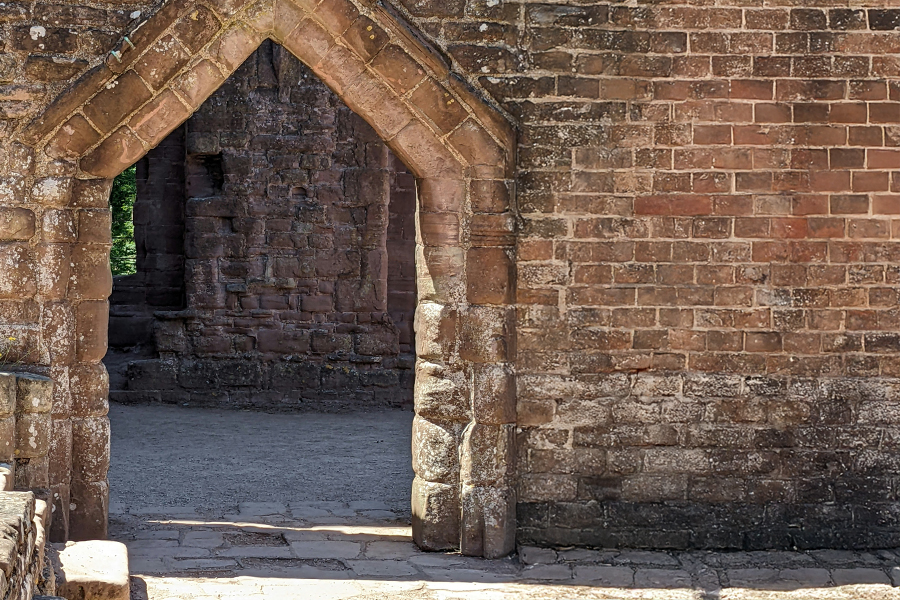
Presteigne, Powys (Welsh Borders)
Why go: Once the county town of Radnorshire, Presteigne sits just over the English border and, a bit like Hay-on-Wye, has a creative streak. In the 19th century, it was home to The Judge’s Lodging, which is now a brilliantly preserved museum that shows how law and local life once worked together. Today, the town is known for its arts scene and the gentle walking trails that follow the River Lugg.
What to do:
- Visit the Judge’s Lodging museum for a quirky slice of Victorian life
- Browse local art galleries and vintage shops
- Walk the River Lugg path or picnic in Wents Meadow
Good to know: It’s tucked away but close to Knighton and the Offa’s Dyke Path, great if you want to add a bit of adventure to your family travels.
Why go: Cromford is often overlooked in favour of nearby Matlock Bath, but it’s just as interesting. This is where Sir Richard Arkwright built the world’s first water-powered cotton mill in 1771 and, in doing so, kickstarted the modern factory system. Today, Cromford Mills forms part of a UNESCO World Heritage Site, but the village itself still feels quiet and lived-in. You can expect stone cottages and canal walks and a general sense that this town once felt very important.
What to do:
- Visit Cromford Mills, part of the Derwent Valley World Heritage Site
- Stroll the canal towpath and spot local wildlife
- Stop for coffee or a pint in a cosy riverside pub
Good to know: There’s a pay-and-display car park by the canal and a lovely bookshop in the old stable block, which is well worth a browse.
Why go: Once a drovers’ route stop and borough with its own mayor and court, today it’s known for its festivals and long-standing brewing tradition.
The Three Tuns Brewery is one of the oldest in the UK (dating back to 1642), and the surrounding Shropshire Hills AONB makes it a great launchpad if you fancy a hike (just decide on whether to have a pint before or after the walk).
What to do:
- Explore the town’s galleries, secondhand shops and old coaching inns
- Visit the House on Crutches Museum for a local-history fix
- Hike to the Kerry Ridgeway or take shorter woodland loops
Good to know: Don’t miss the Three Tuns Brewery, one of the oldest in the UK, and its charming pub next door.
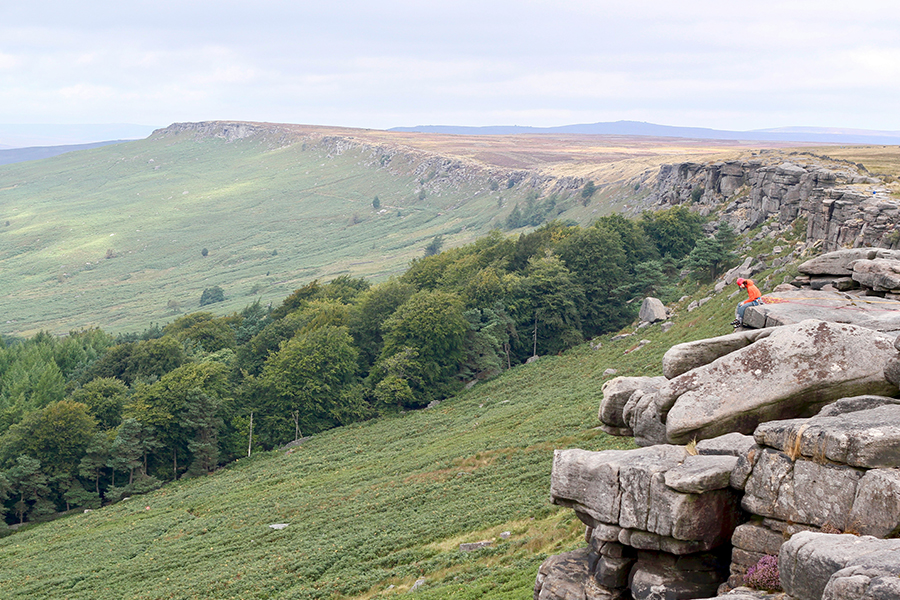
Why go: Winster is a small Peak District village that was once a bustling centre for lead mining. It was also one of the first villages in Derbyshire to have its own market charter.
The Market House, now owned by the National Trust, sits at its heart and gives a glimpse into the village’s trading history.
What to do:
- Wander the National Trust–owned Market House and village lanes
- Pick up homemade treats from the community-run shop
- Walk to nearby Stanton Moor for scenic views and stone circles
Good to know: It’s close to Bakewell and Matlock but miles quieter. Parking is limited, so arrive early or you could even walk in by using the local trails.
Why go: Much Wenlock might be small, but it has a significant claim to fame, this was the birthplace of the modern Olympic Games.
Local doctor William Penny Brookes started the Wenlock Olympian Games here in the 1850s, an idea that later inspired the global version.
What to do:
- Explore the ruins of Wenlock Priory
- Walk up to Wenlock Edge for sweeping Shropshire views
- Dip into bookshops, tea rooms and the small museum
Good to know: Easy to explore in a few hours, but it’s also a great overnight stop if you’re touring Ironbridge or the surrounding countryside.
Trip 3: A little bit of something Southern in Somerset, Wiltshire & Gloucestershire
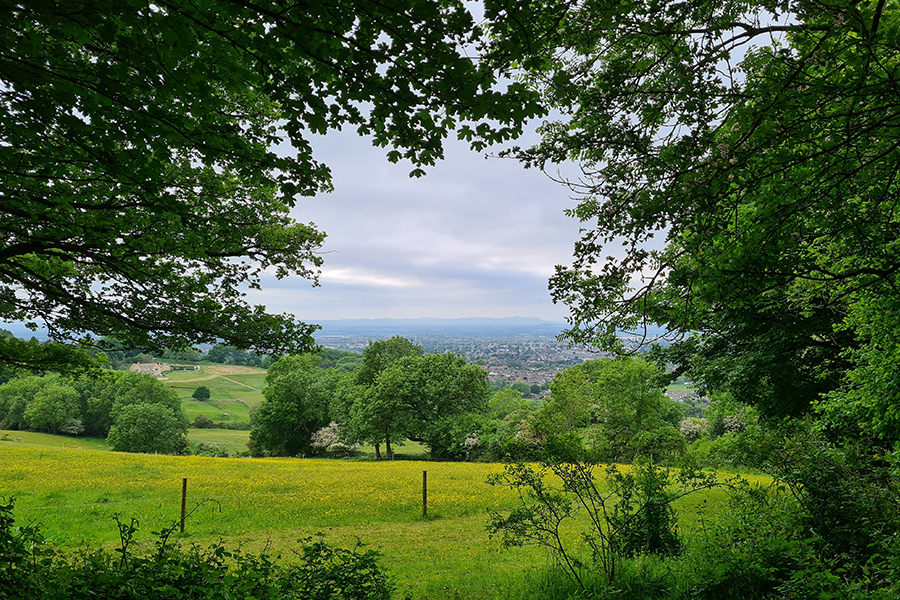
Wootton-under-Edge, Gloucestershire
Why go: Wotton-under-Edge has a long history, including links to Katharine Lady Berkeley’s School, founded in 1384 and still running today, and a solid high street full of independents.
You’re right on the Cotswold Way, so it’s brilliant for walking, and the town still has its own independent cinema and community-run swimming pool. Go here if you’re looking to fill an afternoon without having to plan it.
What to do:
- Walk a stretch of the Cotswold Way straight from the high street
- Catch a film at the community-run Electric Picture House
- Explore local delis, charity bookshops and creative studios
Good to know: There’s free parking in the town centre, and the walk to nearby Tyndale Monument offers panoramic views without the crowds.

Why go: Just a few miles from Bristol, Long Ashton feels like the countryside has crept right up to the city’s edge. It’s a village with layers: from historic coaching inns and fields of grazing sheep, to a quietly fascinating link with Ribena and a creative, local food scene.
What to do:
- Enjoy a long lunch at The Angel Inn, a 15th-century pub once visited by Queen Elizabeth I, now with a brilliant beer garden and a little campsite tucked just behind it
- Dine at The Old Library, a family-run restaurant that mixes thoughtful small plates with relaxed charm
- Explore the village’s green spaces, or head into Ashton Court Estate just up the hill for wide open walks and deer spotting
Good to know: Long Ashton is just 15 minutes from Bristol but feels like proper countryside. If you’re touring by campervan or motorhome, the CL site behind The Angel Inn is a peaceful and well-placed stop with pub meals essentially next door.
Why go: Malmesbury is often left off Cotswold itineraries, which is surprising, given it’s England’s oldest borough with over a thousand years of history. The town grew around Malmesbury Abbey, where the first King of England is buried, and where an 11th-century monk once tried to fly off the tower with homemade wings. Today, it’s a friendly, walkable town with a river, independent shops and the stunning Abbey House Gardens, which is said to be home to over 10,000 tulips each spring.
What to do:
- Explore the 12th-century Malmesbury Abbey and its beautiful grounds
- Visit Abbey House Gardens — a hidden gem with colourful history
- Browse independent shops and stop for lunch in the Market Cross area
Good to know: It’s on the quieter edge of the Cotswolds, with easy access from the M4 and A429, so it’s ideal for spontaneous stop-offs.
Why go: Once a centre for iron mining and later a model estate village, Mells has links to figures like Siegfried Sassoon, Ronald Knox and the Asquith family, all of whom are buried in the churchyard. Today, it’s better known for its tearoom, community-run walled garden café, and being the kind of place where, if you visited 200 years ago, it would still look largely the same.
What to do:
- Walk the mellow valley trail along the Mells River
- Visit the community-run Walled Garden Café
- Explore St Andrew’s Church with its links to Siegfried Sassoon and WWI history
Good to know: Combine with a trip to nearby Frome for vintage shopping, or just stretch lunch into the afternoon and enjoy the quiet.
Why go: Its grandest building, Corsham Court, still dominates the town, once home to the Methuen family and now packed with Old Masters and surrounded by landscaped parkland. It’s less polished than Bath, but that’s part of the appeal.
What to do:
- Visit Corsham Court, with its stately home feel and peaceful parkland
- Pop into the Pound Arts Centre for exhibitions, workshops or just a coffee and a wander
- Keep an eye out for the resident peacocks strutting around the town centre
Good to know: It’s only 15 minutes from Bath, but it feels like a different world because it’s much, much quieter. A great spot for a day trip, or an easy overnight stop on your way into Somerset.
Trip 4: The South East, Sussex, Kent & Surrey
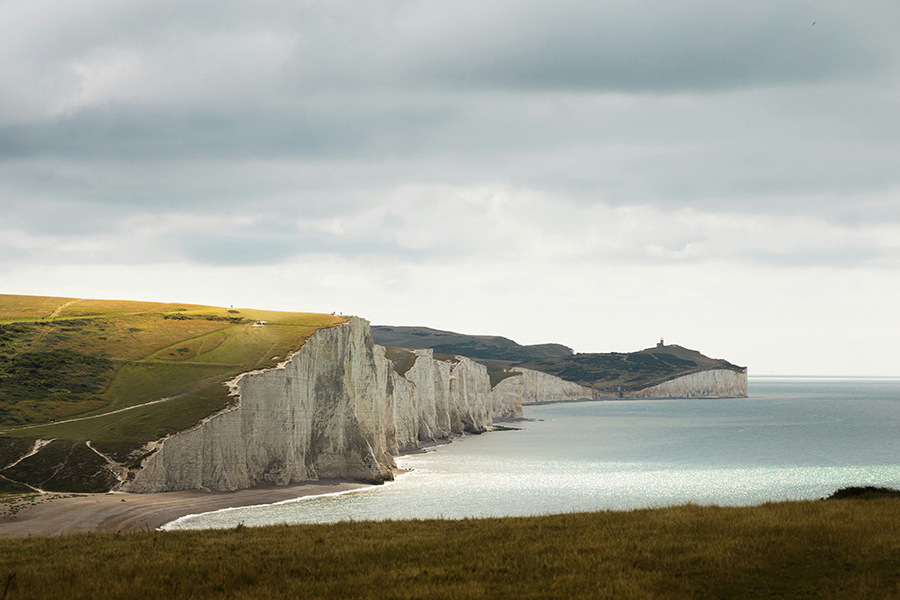
Why go: Known as the “Jewel of the Weald,” Tenterden was once a thriving wool town with access to the sea via the River Rother, and you can still feel that old prosperity in its wide Georgian high street and timber-framed buildings.
The Kent & East Sussex Railway still runs from here, which offers you a chance at a steam-powered ride through the countryside. It’s ideal for spending a relaxed day here, because there’s just the right amount of things to do to keep you occupied.
What to do:
- Ride the Kent & East Sussex Railway steam train through countryside
- Browse antiques and family-run bookshops
- Sample wine or cider from local producers dotted around the town
Good to know: Just off the A28, with plenty of easy parking. Combine with a visit to Chapel Down vineyard or Bodiam Castle if you want to stretch the day.
Why go: Alfriston is one of Sussex’s oldest and best-preserved villages. Its medieval layout is still visible today, with a central market square and a flint church known locally as the “Cathedral of the Downs.”
The village also has a special place in National Trust history, because its Clergy House was the very first building the charity ever saved.
What to do:
- Walk the riverside path to the Long Man of Wilmington
- Visit the National Trust’s Clergy House, the first building they ever saved
- Stop for lunch or cream tea in a timber-framed pub or tearoom
Good to know: Midweek visits are especially quiet. Combine with a longer walk in the South Downs Way for a no-rush outdoor escape.
Why go: Chiddingfold has been a stopping point for travellers since medieval times. It was once known for its glassmaking and is now better known for its village green, duck pond, and 15th-century pub (called The Crown Inn).
The village sits within the Surrey Hills AONB, so it’s surrounded by ancient woodland and narrow lanes, and has managed to stay remarkably untouched by much modernity.
What to do:
- Have lunch or a pint at the 600-year-old Crown Inn
- Explore the woodland walks around Winkworth Arboretum
- Visit local potteries or independent farm shops
Good to know: It’s 20 minutes south of Guildford but feels like deep countryside. Best enjoyed on a slow drive or weekend ramble.
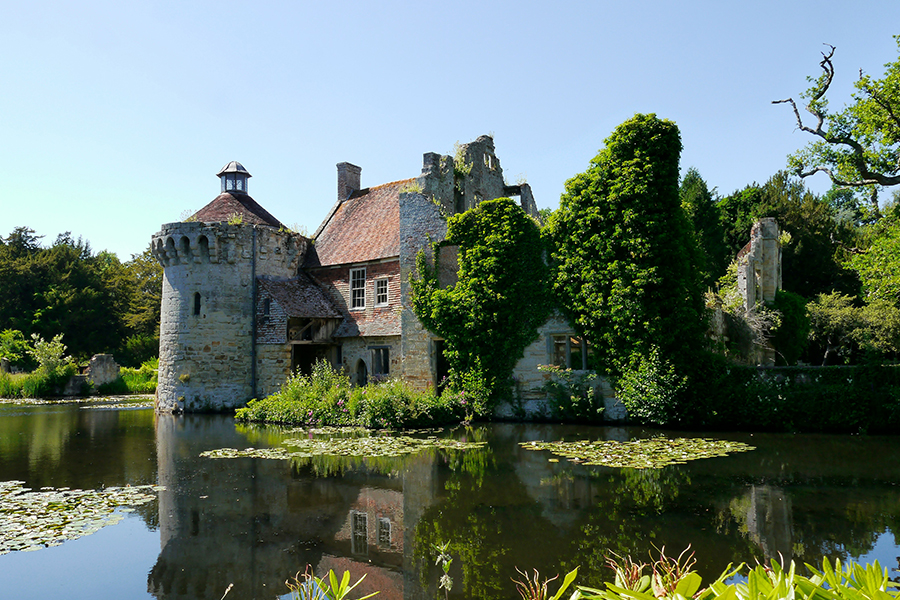
Why go: Wye sits at the foot of the North Downs, with chalk ridge walks that start right from the edge of the village.
The centre itself is a mix of Georgian houses and Victorian schools. It’s well-loved by walkers, foodies and anyone looking for a peaceful base that still has a bit going on.
What to do:
- Walk the Wye Downs for views across Kent’s rolling hills
- Visit Perry Court Farm for fresh produce and local goods
- Explore the small high street cafés or just unwind in the churchyard gardens
Good to know: Wye has its own train station, making it easy to get to if you’re staying on a campsite near a further away mainline.
Why go: Petworth is best known for Petworth House, the National Trust’s grandest property in Sussex, which is filled to the brim with Turner paintings.
But the town itself has just as much character: antique shops in old coaching inns with cobbled lanes outside.
What to do:
- Explore Petworth House and Deer Park, a National Trust highlight
- Browse independent antique shops and interiors stores
- Visit Newlands House Gallery for modern art in a historic setting
Good to know: It’s a popular weekend escape for locals in the know, so aim for early morning or weekdays for a more relaxed visit.
Ready to try some of these underrated UK travel destinations?
Whether you’ve got a long weekend coming up or just want to see where the road takes you, these are some of the best small towns in the UK and proof that some of the best family memories can be made a little off the beaten track.
And with the right motorhome, campervan, caravan or behind you, it’s easier than ever to head off at a moment’s notice, with the comfort, space and flexibility to go wherever the mood takes you.
Take a look at our latest Bailey ranges to find the right fit for your next UK road trip destination.
Or, for more travel ideas and destination guides like this one, head to our News & Events blog.
Latest news & events
See all news & eventsSpectacular End of Season Sale at Winchester Caravans & Motorhomes
COLDEN COMMON, MAIN ROAD, WINCHESTER




